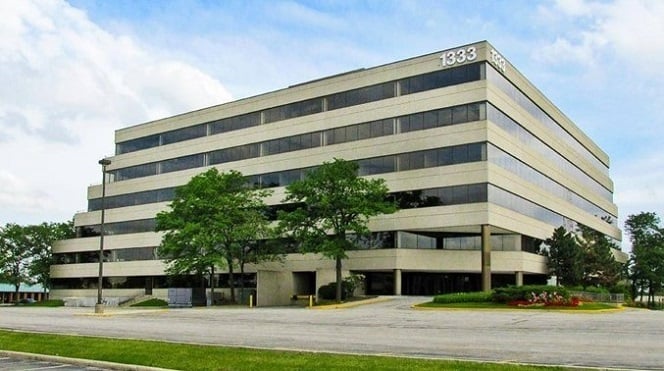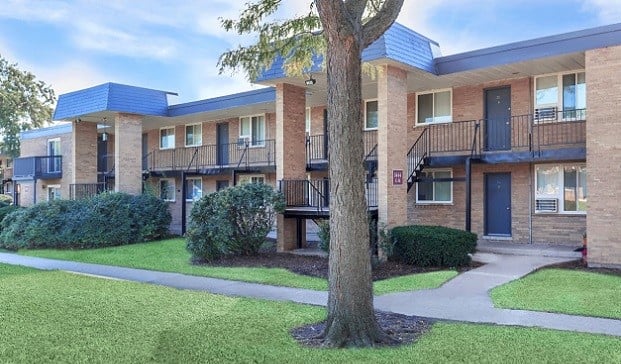This is an HTML version of a story that ran in the June issue of Real Estate Forum. To see the article in its original format, click here.
Earlier this year, developer Korean Air Lines, a subsidiary of Korean conglomerate Hanjin Group, revealed the design of what is expected to become one of L.A.'s tallest buildings, the new Wilshire Grand. The team displayed its $1-billion project in a photographic rendering of how the L.A. skyline will look when completed in 2017.
The 73-story building is set to feature a sleek architectural façade. It is crowned with a glass pediment and spire, topping out at 1,100 feet and making it among the tallest buildings in the western US. The project includes a 900-room, four-star luxury hotel, 45,100 square feet of retail space featuring world-class restaurants and 400,000 square feet of class A office space.
A spokeswoman told GlobeSt.com at the time that from a developer's standpoint, the project demonstrates Korean Air's commitment to Los Angeles as a global hub.
And less than a mile away, another noteworthy property made headlines just a few months ago. As GlobeSt.com reported, US Bank Tower in Downtown Los Angeles, owned by MPG Office Trust, was sold to Beringia Central LLC, a wholly owned US subsidiary of Singapore-based Overseas Union Enterprise Ltd.
The deal was seen by CRE office executives as a plus for the area and the office market in general and several industry insiders, in fact, told GlobeSt.com that the trade is a positive step if only because it “diversifies the number of owners in the L.A. office playing field.”
The new owner, for which the tower is its first investment here, is pleased with the way the US commercial real estate market is looking and sees interesting opportunity in the US market relative to Asia.
For that deal, Downtown L.A. was a market of particular interest to the group, according to Richard Stockton, the locally based president and CEO for OUE in the Americas. He previously said that “We like what we see in terms of the revitalization of the area. We like what's happening in the entertainment district.” He added that he would like to see more residential units being built and occupied. “Downtown Los Angeles is going through a bit of a Renaissance, attracting more employers to the area. We hope to be part of that and continue to drive it in the right direction.”
What these two projects have in common is the foreign investment component—a trend we're hearing more of these days, especially Southern California.
At our RealShare L.A. conference, for example, Industry Leaders panelist Emile Haddad, president & CEO of Aliso Viejo-based FivePoint Communities, explained that there is an influx of money coming into this country. Haddad pointed out that in certain markets, he wasn't surprised to see foreign money, but what was unexpected was the high percentage of foreign buyers in certain communities.
In Irvine, for example, most of the buyers are coming from Asia—mainly China and Korea—Haddad said. In addition, in other areas like in the Southeast, “A lot of people thought the condo market in Miami would take a long time to get absorbed, but it actually absorbed very quickly thanks to the South American buyer influence.”
RealShare L.A. moderator Scott Farb, partner of CohnReznick, has also noticed a huge amount of capital coming to our shores. “The US remains the world's favorite place to invest in real estate, primarily because we're still perceived as a safe haven, especially given the current instability in Europe as well as the economic slowdown in China and Asia,” he said. “There's lots of capital coming in from all over the world to the US to buy primarily class A commercial properties and higher end residential properties in gateway cities such as L.A.”
In addition to the previously mentioned Asian and South American investors, Scott Sweeney, CEO of Property Income Advisors Inc., tells Real Estate Forum that he has seen a strong increase in activity from Gulf-based investors over the past 12 months.
“Historically, they've preferred to invest in their local markets, with any outside investment typically focused on central London,” he says. “The Middle East real estate markets were negatively affected during the downturn and many are still struggling with oversupply and a lack of demand.” Additionally, “London has gotten quite pricey and competitive.”
In the past, Sweeney continues, many Gulf-based investors used fund vehicles to invest in US real estate. “During the market downturn, they learned that the property valuations weren't accurate, the fee schedules were high and, when things went bad, they had no say in how to address the issues,” he says. “As a result, today we see a much stronger preference for direct investment.”
Gulf-based investors are mostly focused on the top 15 US markets, according to Sweeney. “And while they typically prefer the East Coast, the West Coast markets of San Francisco, Seattle and Los Angeles are of high interest as well.” And, on a more selective basis, he adds, they will also consider investments in Southern California markets like Orange County and San Diego.
“These players are very focused on income with many interested in single-tenant, long-term net leased assets in very strong locations. A strong credit tenant is extremely important,” says Sweeney. “Over the past 12 months, we've also seen a large increase in US real estate interest from Islamic investment houses with many considering US investment for the first time. These groups have been able to work through some of their legacy issues and they are now in search for on-going, predictable income.”
The Association of Foreign Investors in Real Estate came out with its “Emerging Market” survey in January, which found that of the top five global cities for investment preferred by the members, four are in the US. This is the first time this has occurred since the question was first asked in 2001.
“The strong endorsement of both San Francisco and Houston by our members in this year's survey directly reflects the propensity for real estate investment to follow jobs—in this case, technology and energy, which are thought to be among the top drivers of the next economic wave,” says James A. Fetgatter, chief executive of AFIRE. “As other economic drivers emerge, it will not be surprising to see investors seek opportunities beyond the traditional New York and Washington, DC markets.”
According to Gary Mozer, Los Angeles-based principal and managing director of George Smith Partners, it's not just foreign investment that is hot, but investment opportunities in general are expanding. “The relative value of real estate is climbing, especially when compared to other asset classes such as bonds, stocks and operating companies,” he says. “As a result, the risk-adjusted value of commercial real estate is now attracting many new equity investors.”
In today's market, foreign capital, family offices and high-net worth investors are competing with the opportunity/hedge funds, pension fund advisors and big institutions in an effort to capitalize on the increase in potential investments, Mozer explains.
“A year ago, most investors were only interested in new apartments, grocery-anchored retail properties, and class A office and industrial product located within the top six gateway markets in the US,” says Mozer. In contrast, he says, over the past six months, his firm alone has placed more than $100 million of equity for uses such as apartment development, land to be re-entitled for development and the acquisition and repositioning of existing apartment, industrial, retail and office product.
On the retail side, Alvin Mansour, SVP of investments and senior director of the national retail group and net leased properties group at Marcus & Millichap Real Estate Investment Services, says that foreign buyers have come into play in the investment arena across the nation.
“Considering the instability in the global markets, we have recently sold some shopping centers, single tenant retail and office buildings to overseas buyers,” he says. “We have also seen an uptick in interest from Latin American buyers targeting the US for real estate investment.”
For example, Mansour recently sold three shopping centers located in Arizona and Illinois to a Dubai-based client. In addition, Latin funds, he says, have been targeting retail investments in South Florida and border towns in Texas and California—places with heavy Hispanic populations.
“We've also sold some high-profile single-tenant retail properties—drugstores and banks—to Israeli buyers in locations like Houston, Las Vegas and Miami,” Mansour tells Forum.
And on the hotel side, in a recent GlobeSt.com article, Lauro Ferroni, VP of research for JLL, said that the Los Angeles hotel market—which is performing strongly and posted double-digit RevPAR growth 2012—is attracting foreign interest as well. “The Los Angeles market attracts significant interest from Asia-based investors.”
Those buyers, Ferroni adds, “predominantly pursue assets unencumbered by brand and/or independent hotels.”
Bill Stadler, senior managing director for HFF, also noted in a recent GlobeSt.com article that on the investment-sales side, there continues to be a strong appetite for West Coast hotels from both domestic investors and Asian buyers. “There are more Chinese investment groups looking for assets here in California,” he said. “For instance, an Asian group acquired Hilton Ontario. They're very sophisticated buyers—sales are fairly disciplined in terms of pricing.”
Continue Reading for Free
Register and gain access to:
- Breaking commercial real estate news and analysis, on-site and via our newsletters and custom alerts
- Educational webcasts, white papers, and ebooks from industry thought leaders
- Critical coverage of the property casualty insurance and financial advisory markets on our other ALM sites, PropertyCasualty360 and ThinkAdvisor
Already have an account? Sign In Now
© 2024 ALM Global, LLC, All Rights Reserved. Request academic re-use from www.copyright.com. All other uses, submit a request to [email protected]. For more information visit Asset & Logo Licensing.








